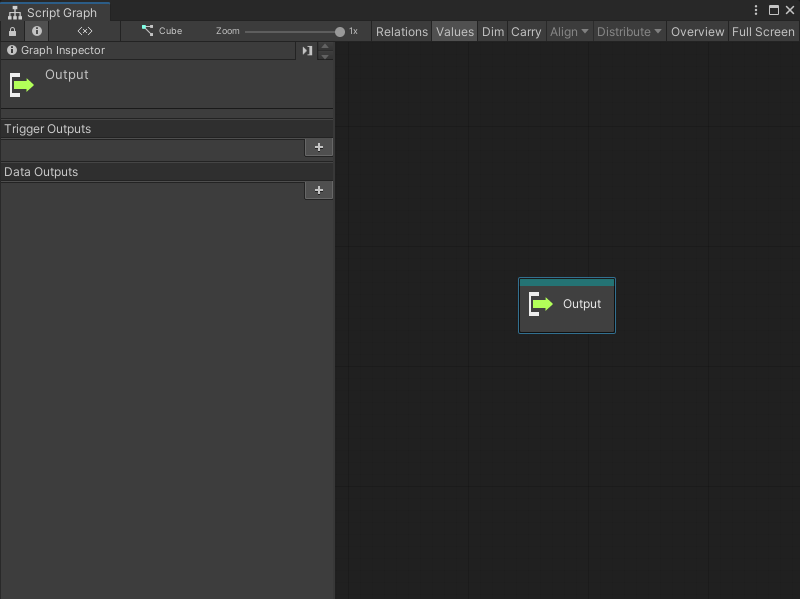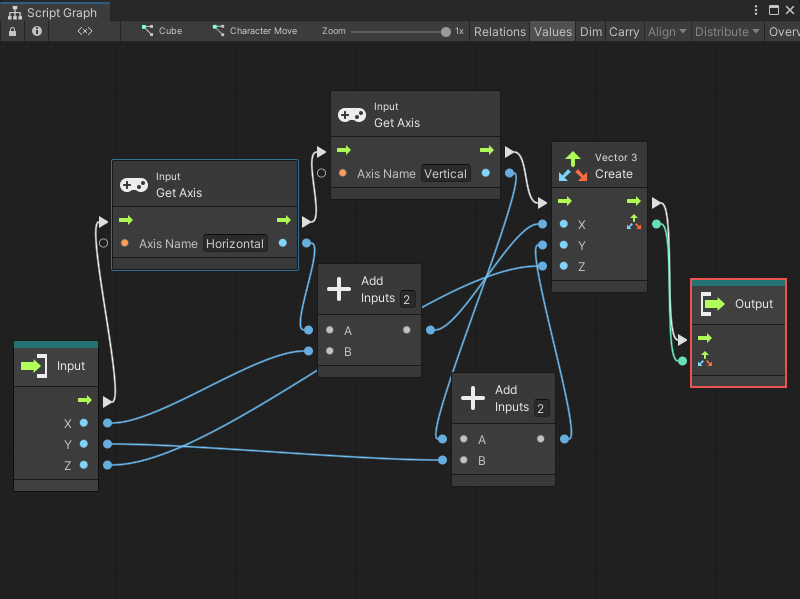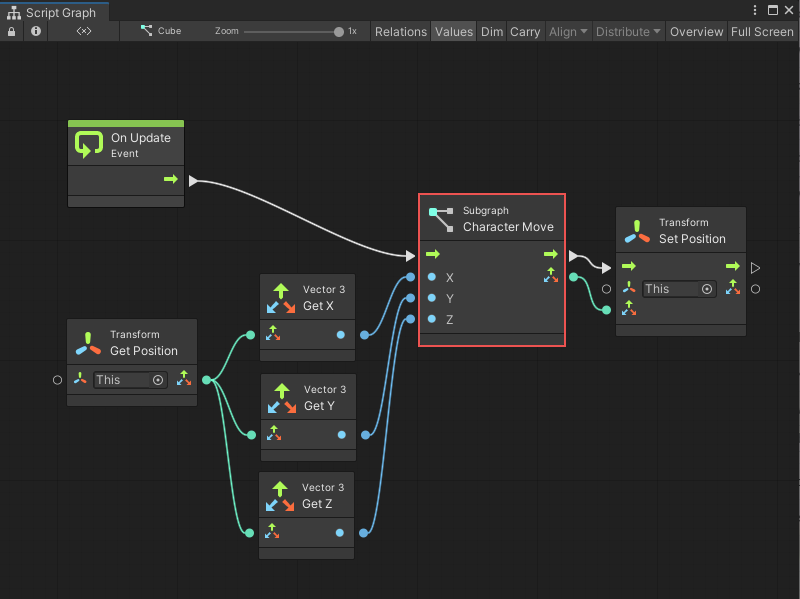4.5 KiB
Output node
Use an Output node to control the flow of logic and data from a Script Graph's Subgraph node. An Output node sends data from a Subgraph and makes it available to a parent graph.
For more information on Subgraphs, see Subgraphs and State Units and Subgraph node. For more information on Script Graphs, see Graphs.
Fuzzy finder category
The Output node is in the Nesting category in the fuzzy finder.
Available inputs
By default, an Output node has no ports.
The Output node can only have input ports. Define the number and specific data type for the input ports with the Graph Inspector. For more information on how to define ports on a Script Graph, see Add a Trigger or Data port to a Script Graph.
| Port Type | Description |
|---|---|
| Trigger Output | A control port. Make a connection to this port to tell Visual Scripting which node triggers its exit from the Subgraph and the return to the logic in a parent graph. After the Output node runs, Visual Scripting starts any connections made to the matching Trigger Output port on the Subgraph node. |
| Data Output | A data port. Make a connection to this port to send data from a Subgraph to its parent graph. Visual Scripting returns any value from a node connected to this port to any node connected to the matching Data Output port on the Subgraph node. |
Example graph usage
In the following example, the Character Move Subgraph uses an Input node to receive data from a parent graph. The Subgraph uses three values from the parent graph and the values from two Input Get Axis nodes to create a new Vector 3 value. The graph sends the new Vector 3 value to the Output node and back to the parent Script Graph. The Subgraph reduces the number of nodes in the parent graph.
The parent graph receives the Vector 3 value from the Output node. The parent graph uses that value to set a new position on the current GameObject's Transform component.
Related nodes
Use an Output node with the following nodes:


